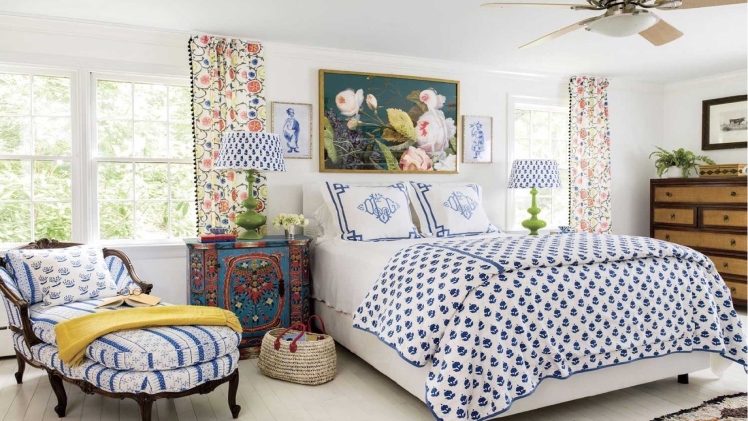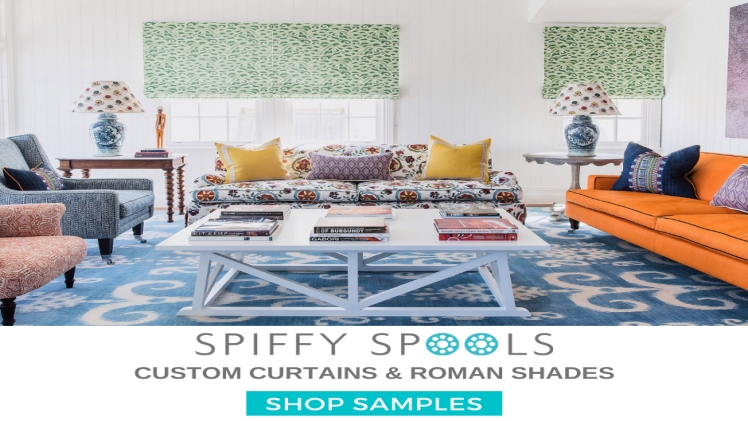If solid colors give breathing space to a room’s decor, prints and patterns bring energy to it.
Combined smartly, multiple prints and patterns can add depth, character, and personality to your space. On a warning note, getting the print mix wrong means your space ends up looking overwhelming, chaotic, and just off-balance. This is also the reason that most people are unnerved when tasked with choosing multiple prints and patterns to be used together in one space. In comparison, most designers revel in creating irresistible looks through this mixing.
So, how does a regular householder create a multi-pattern interior with patterns on sofa covers, throw pillows, curtains, wallpapers, while interspersed with solid colours at the same time that looks put together by designers? We have some time tested tips and tricks that will help you get the hang of it.
Read on.
Begin by deciding the vibe
Prints and patterns come in many varieties. Florals, toile, damask, plaid, chevron, ikat, stripes, dots, paisleys, animal, etc – there are many broad categories of prints. Each has its own vibe, e.g. paisleys and damask give a traditional feel, florals are romantic, stripes are masculine, animal prints look eclectic, ikat gives an earthy and boho feel, and plaid has a conservative and sporty air. If there’s a key vibe you want your space to evoke, choose the dominant print accordingly. Bring your kitchen vision to life with modular kitchen furniture! Explore our collection today and find the perfect pieces to elevate your culinary experience.
Choose at least 3 patterns that complement one another
The key to getting the print mix correct is to choose a set that gets along well. Some such sets are florals with polka dots and stripes, paisleys with herringbone or chevron and stripes, damask with floral and stripes, plaid checks with florals and stripes, and ikats with stripes and florals. If this confuses you, carry fabric swatches to the room and place them together against the wall for assessing how good or bad their combination looks. Many designers can successfully mix five or more patterns in one space but for a layperson, it is better to err on the side of the caution, and stick to three prints maximum. The correct selection of patterns and their proper placement can give an instant makeover to your room.
Don’t mix two large prints
Choose only one large scale print for a room. Two or more large prints together can look disorderly. Better to stick to one large, one medium, and one small print in one space. You can also choose one large and two small prints doithuong.
Move from the largest to the smallest one
If a print catches your eye, first check the scale of its print. Is it large or medium or small? It is generally a good idea to begin by choosing the large scale print (some designers call this the hero print). Once that’s final, choose medium and small scale prints to complement it. If you are not confident of getting this right, choose one large scale print and one small print from the same color palette.
Keep the color palette limited
Stick to a limited color palette for prints. Two or three colors, at the most. Too many colors can look overbearing and in any case, the variety factor is conveyed by diverse prints and patterns.
Go monochrome
If you are looking for an understated and elegant look while using a print mix, keep all the prints in a monochrome palette. For example: if you are combining florals with stripes and damask, keep all in the color palette of pale grey, pale blue, and navy blue. Your room will have a subtle texture and exude a strong personality.

Let the patterns breathe
Solid colors give patterns breathing room and give the eye a place to rest. We recommend that you layer your prints with occasional solid colors. For example: if the couch is upholstered in printed fabric, make some cushions plain and some in complementary prints, or if you have printed roman shades or curtains, let the walls be in solid color from the same color pallete as the window treatments. This will make all the prints look so much more noticeable.
Distribute the patterns evenly across the room
Don’t make one side of the space heavy on prints and the other side low. This will make the room appear unbalanced. Keep the prints evenly distributed and your interiors will look more harmonious.
More bonus tips if you are still feeling underconfident about mixing prints and patterns:
- Use prints as secondary touches rather than the main theme. You can follow the 60:30:10 rule i.e. 60% of the room in solids, 30% in one print, 10% in the second print.
- Begin by covering the floor with a rug with large scale print. Then add medium and small scale prints on curtains, furniture, cushions, wallpaper, etc. The rug will anchor the room beautifully and the prints won’t clash. Keep all the prints from the same color palette.
- Avoid pattern overload, especially while decorating a small room. Don’t use too many prints in one area. Limit yourself to a maximum of three prints and add layers of solid colors.
We hope that these tips will help you get the perfect print and pattern mix in your home.

